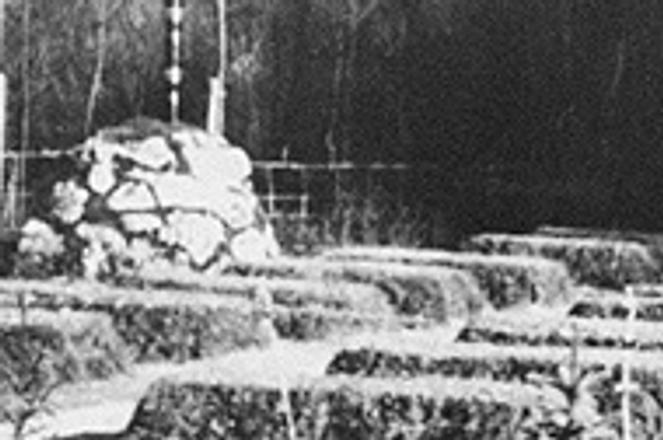Roma killed at the Dubnica detention camp re-buried in separte graves.
photo: Courtesy of SNM
THE ROMA Holocaust is still unknown and unacknowledged. Though the war ended more than half a century ago, history has yet to clarify all the facts. And what we know generally remains unknown to the public. Why? Disinterest? Dislike for dealing with what is behind us? A tendency to forget and deny that the marginalized theme of marginal groups concerns us also?
Zuzana Kumanová,
ethnographer
On the night of August 2 to 3, 1944 the "gypsy" section of the concentration camp at Auschwitz-Birkenau was closed down. A small number of the prisoners from all around Europe were deported to concentration camps in Buchenwald and Ravensbrűck. The remaining 2,897 Roma men and women, including old people and children, were taken to the gas chambers. Nobody survived.
It is believed that around 21,000 European Roma deported to Auschwitz-Birkenau suffered a similar fate during World War II.
What is the worst period in the modern era for Roma, when almost half of the population was killed, is remembered in Slovakia through a travelling exhibition called Slovak Roma Holocaust 1939-1945, which opened in Bratislava on November 9. In Slovak, Roma and English the exhibition documents the situation of the Roma during WWII in Slovakia.
The first two panels of the show provide basic information on the Roma and their position in Europe during WWII. The third panel explains the legislation taken against them between 1939 and 1945, from administrative measures to action suppressing their civil rights. The exhibition particularly focuses on work units organized in Slovakia.
A special panel is dedicated to the detention camp in Dubnica nad Váhom, to which entire Roma families were sent in 1944.
The harshest were the years at the end of the war, 1944 and 1945, when Slovak Roma were deported, imprisoned, tortured and several hundred killed on the spot. The exhibition also documents the development of the territory in southern Slovakia, which fell to Horthy's Hungary during the war following Vienna's arbitration. The last panel shows Holocaust reminiscences and the way Roma as well as non-Roma cope with the tragedy.
The exhibition is part of the Ma bisteren! (Don't Forget! in Roma) project dedicated to remembering the Roma suffering during the WWII. Ma bisteren! puts up memorial plaques at locations where Roma persecutions took place, and educates widely on the subject.
The exhibition opened in Banská Bystrica on the occasion of the International Day of Remembering the Roma Holocaust on August 2. The Bratislava Museum of Jewish Culture at Židovská 17 hosts Slovak Roma Holocaust 1939-1945 until January 15, 2006.


